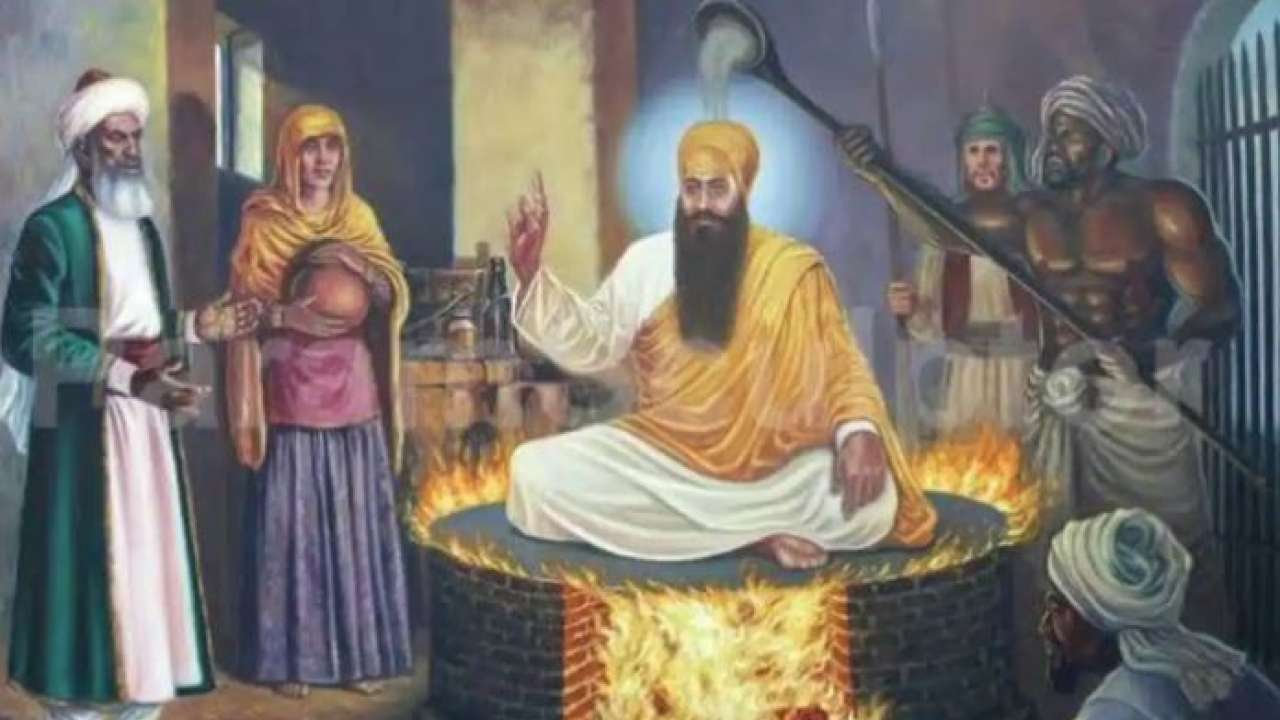To the devout Sikh and Hindu, the searing heat of a June day in north India goes beyond what the Celsius figures can describe. It is a deeply felt pain, for on one such day, precisely, Jeth Sudi 4 (as per the Hindu calendar), 1606, the fifth Guru was martyred at the hands of the Mughal rulers. The Guru’s followers assemble in gurudwaras across the country and cry streams of tears as they listen to the bone-chilling stories of torture. The 43-year-old saint was made to sit on a tatta tava or burning hot plate, Muslim soldiers poured hot sand on him and he was dipped in boiling hot water. Guru Arjan Dev was tortured for five long days before being executed for his refusal to convert to Islam.
Guru Arjan Dev was the first Indian spiritual leader to be killed by the 16th-17th century Muslim emperor, Jahangir, as part of a holy war. Historians from the east to the west have given different versions of the execution, some calling it a political killing over the Guru’s support to Jahangir’s rebellious son, Khusrau. They would like to absolve Jahangir of Jehad but there is overwhelming evidence that it was, indeed, that.
Jahangir himself wrote about it in his autobiography, Tuzk-e-Jahangir: “In Goindwal, on the banks of the river Beas, lived a Hindu named Arjan, who wore robes of worldly dignity and high spiritual order. Many simple-minded Hindus and ignorant Muslims, too, had been fascinated by his ways. He was noised about as a spiritual master and they beat a drum of his prophet-ship and called him an enlightener…. From all directions, shoals of people would come to him and express their devotion. This traffic had been carried on for three or four generations. For years it was coming to my mind that either I should put an end to this false traffic and imposturous shop or I must bring him into the fold of Islam.”
Guru Arjan Dev refused to cave in to Jahangir’s command to convert, following which the ruler ordered his arrest and execution. Torturous killing turned out to be a popular way of executions by the Islamic rulers of India, and Sikh history is replete with stories of how the devout were killed bit-by-bit right up to the middle of the 18th century. After Guru Arjan Dev’s execution, protection of Hindus against oppression/religious conversion–and martyrdom–became synonymous with the Sikh religion. The millions of the Hindu and Sikh devotees alike marvel at the stories of such sacrifices that the Sikh gurus and their followers made for the protection of Hinduism. Today, as they stand on the roadside to serve at the chhabeels (stalls where cool drinks made out of milk, water, sugar, rose and kevra extracts are served), they are just sharing their sentiments with the world.
The author is a senior journalist, based in Delhi


















Discussion about this post